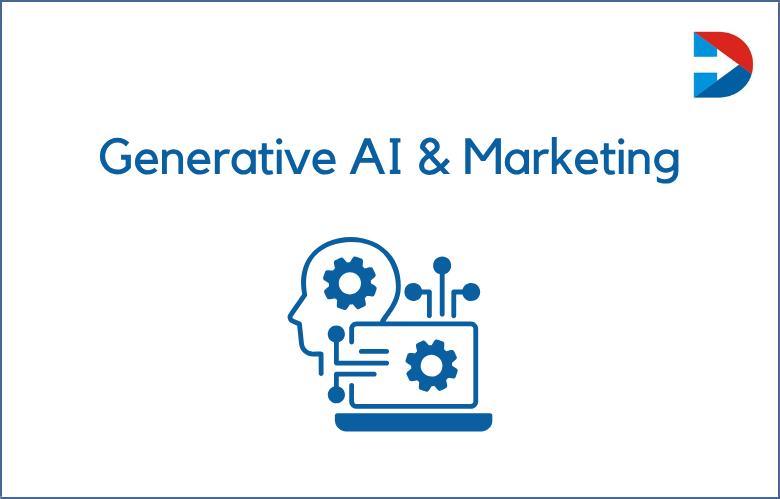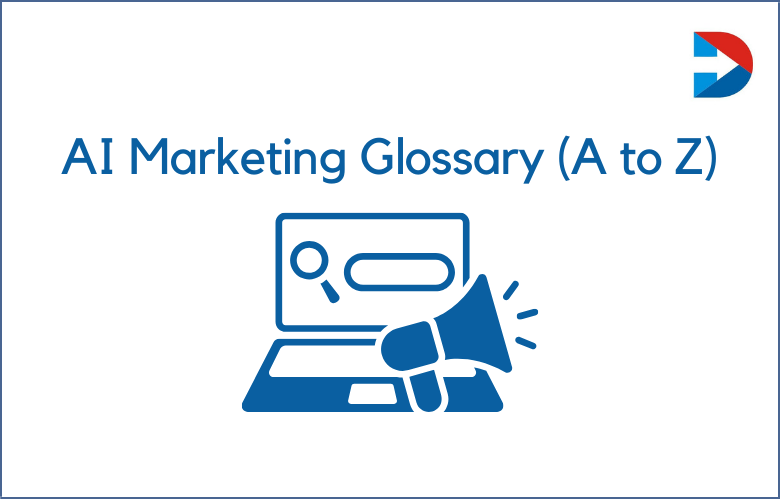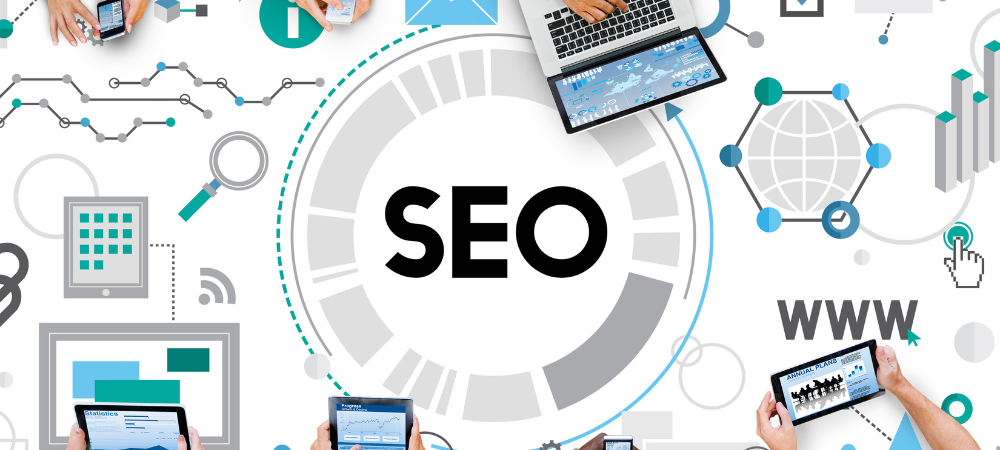
Are you struggling to boost your online marketing efforts? Wondering how to re-engage with potential customers who have visited your website but didn’t convert? In this updated list for 2024, we’ve compiled the best retargeting tools that will help you reach out to those missed opportunities and turn them into loyal customers.
These platforms offer powerful features to target specific audiences, increase conversions, and maximize your ROI. Stay ahead of the competition and supercharge your marketing strategy with these top retargeting tools at your disposal.
Key Takeaways
- Key Takeaways
- Retargeting Software Explained
- 2024’s Top 20 Retargeting Tools
- In-Depth Analysis of Top 10 Platforms
- Pros and Cons Comparison
- Software Selection Criteria
- Core Functionality and Features
- Usability and User Interface Insights
- Pricing and Integration Options
- Retargeting vs Remarketing Explained
- Summary
- Frequently Asked Questions
- What is the difference between retargeting and remarketing?
- How can retargeting software benefit my business?
- What are the key criteria for selecting the right retargeting platform?
- Which core functionalities should I look for in a retargeting tool?
- How important is the user interface and usability of a retargeting platform?
Are you struggling to boost your online marketing efforts? Wondering how to re-engage with potential customers who have visited your website but didn’t convert? In this updated list for 2024, we’ve compiled the best retargeting tools that will help you reach out to those missed opportunities and turn them into loyal customers. These platforms offer powerful features to target specific audiences, increase conversions, and maximize your ROI. Stay ahead of the competition and supercharge your marketing strategy with these top retargeting tools at your disposal.
Key Takeaways
- Utilize Retargeting Tools: Incorporate retargeting platforms from the updated 2024 list to boost your marketing efforts.
- Evaluate Core Features: Consider the core functionalities and features of the top 10 retargeting tools to align with your specific needs.
- Compare Pros and Cons: Analyze the pros and cons comparison to make an informed decision on selecting the most suitable platform.
- Focus on Usability: Prioritize user-friendly interfaces for seamless navigation and efficient campaign management.
- Consider Integration Options: Explore pricing and integration options to ensure compatibility with your existing systems and budget.
- Distinguish Retargeting vs Remarketing: Understand the differences between retargeting and remarketing for a targeted and effective marketing strategy.
Retargeting Software Explained
Definition
Retargeting software is a digital marketing tool that allows businesses to track and target individuals who have previously visited their website but left without making a purchase. This technology helps in displaying targeted ads to these visitors as they browse other sites on the internet.
Purpose
The primary purpose of retargeting software is to re-engage with potential customers who have shown interest in a product or service but did not convert during their initial visit. By utilizing cookies and tracking pixels, businesses can strategically target these visitors with personalized ads to encourage them to return and complete a purchase.
Key Features
- Customization: Retargeting software enables businesses to create tailored ads based on the visitor’s behavior on their website.
- Segmentation: It allows for the segmentation of visitors into specific groups based on their browsing history, interests, or demographics.
- Tracking: The software provides detailed tracking metrics to monitor the performance of retargeting campaigns and optimize strategies accordingly.
- Cross-Platform: It supports multi-channel retargeting, reaching potential customers across various platforms such as social media, websites, and search engines.
- Dynamic Ads: Retargeting platforms offer the ability to create dynamic ads that automatically adjust content based on the user’s interactions with the website.
2024’s Top 20 Retargeting Tools
Google Ads
Google Ads offers precise targeting options and extensive reach, making it a top choice for retargeting. It provides flexible pricing based on your budget and goals.
Facebook Ads
With its massive user base, Facebook Ads allows for highly targeted campaigns. Its advanced analytics tools help optimize ads for better performance.
AdRoll
AdRoll stands out for its cross-device tracking capabilities, enabling seamless retargeting across platforms. The pricing varies based on the ad spend.
Criteo
Criteo specializes in personalized retargeting campaigns, increasing conversion rates significantly. It offers a pay-per-click model with customizable budgets.
Perfect Audience
Perfect Audience is known for its user-friendly interface and robust retargeting features. Users can start with a free trial before choosing a suitable plan.
ReTargeter
ReTargeter focuses on dynamic ad creation and detailed audience segmentation. It offers tiered pricing based on the number of impressions.
AdEspresso by Hootsuite
AdEspresso by Hootsuite streamlines ad creation and optimization processes for efficient retargeting. Users can access a free trial before committing to a subscription.
Outbrain
Outbrain’s content discovery platform enables personalized recommendations for effective retargeting campaigns. Pricing is customized based on campaign objectives.
Taboola
Taboola’s native advertising solutions drive engagement through personalized recommendations across various websites. The pricing structure is tailored to individual needs.
Retool Marketing
Retool Marketing offers comprehensive retargeting solutions with advanced analytics and automation features. Users can request a demo to explore pricing options.
RollWorks
RollWorks focuses on account-based marketing strategies, enhancing B2B retargeting efforts effectively. Pricing is available upon consultation with their sales team.
SharpSpring Ads (formerly Perfect Audience)
SharpSpring Ads delivers powerful retargeting capabilities integrated with marketing automation tools. They offer competitive pricing plans suitable for businesses of all sizes.
Justuno
Justuno specializes in website personalization and conversion rate optimization through targeted messaging strategies. Their pricing depends on the selected features and customization level.
OptinMonster
OptinMonster helps businesses capture leads through smart targeting and personalized messages, improving conversion rates efficiently. They offer various subscription plans to suit different needs.
Choozle
Choozle’s self-service digital advertising platform empowers users to create customized retargeting campaigns easily. Their pricing structure is transparent and scalable.
In-Depth Analysis of Top 10 Platforms
Google Ads
Google Ads offers extensive reach and precise targeting options, making it a powerful tool for retargeting. However, the complex interface can be overwhelming for beginners.
Facebook Ads
With its vast user base, Facebook Ads provides robust retargeting capabilities. Yet, some users find the ad approval process time-consuming.
AdRoll
AdRoll stands out for its cross-device tracking functionality, ensuring seamless retargeting across various platforms. However, users may face challenges with customization options.
Criteo
Criteo’s strength lies in its AI-powered algorithms, delivering personalized ad recommendations to users. On the downside, some users report issues with customer support responsiveness.
Perfect Audience
Perfect Audience excels in dynamic product ads, enabling businesses to showcase their products dynamically. Nonetheless, integrating external data sources can be complicated.
ReTargeter
ReTargeter offers advanced segmentation features, allowing businesses to target specific audience segments effectively. Yet, some users mention limitations in terms of reporting capabilities.
AdEspresso
AdEspresso simplifies the ad creation process with its intuitive interface, ideal for those seeking a user-friendly platform. However, it may lack some of the more advanced targeting options compared to other platforms.
Outbrain
Outbrain focuses on content discovery and native advertising, providing a unique approach to retargeting. Nevertheless, it may not be as effective for businesses looking for direct response campaigns.
Bizo (LinkedIn Marketing Solutions)
Bizo leverages LinkedIn’s professional network for targeted B2B advertising opportunities. Despite its niche focus, some users find the platform’s pricing structure to be on the higher end.
Chango (Rubicon Project)
Chango offers a data-driven approach to retargeting, utilizing real-time bidding technology for optimized ad placements. Users note that the platform’s learning curve can be steep initially.
Pros and Cons Comparison
Benefits
Increased Conversion Rates: Retargeting tools help in reaching out to potential customers who have shown interest in a product or service, leading to higher conversion rates.
Enhanced Brand Awareness: By keeping your brand visible to users across various platforms, retargeting tools reinforce brand recognition and recall.
Improved ROI: Targeting users who are already familiar with your brand increases the likelihood of conversions, resulting in a better return on investment.
Personalized Approach: These tools allow for personalized messaging based on user behavior, creating a more tailored experience for potential customers.
Challenges
Ad Fatigue: Overexposure to ads can lead to ad fatigue among users, causing them to ignore or become irritated by the repetitive advertisements.
Limited Reach: Retargeting focuses on users who have interacted with your brand before, potentially missing out on new audiences who could be interested in your products or services.
Privacy Concerns: With increasing focus on data privacy regulations, using retargeting tools may raise concerns regarding user privacy and data usage.
Software Selection Criteria
Key Factors
When selecting a retargeting software, consider key factors such as pricing, ease of use, and integration capabilities. Ensure the platform aligns with your business size and goals.
Customization Options Retargeting tools with robust customization options allow you to tailor campaigns based on user behavior. This personalization increases engagement and conversion rates.
Alignment with Business Goals
Align software features with your business goals by choosing platforms that offer advanced targeting options. Tailor your retargeting strategies to reach specific audience segments effectively.
Target Audience Consideration Consider your target audience’s preferences and behaviors when selecting a retargeting tool. Platforms offering detailed analytics can help you understand customer interactions better.
Business Scalability Opt for retargeting tools that can scale with your business growth. Ensure the software can handle increased traffic and provide insights for continuous optimization.
Integration Capabilities Choose a platform that seamlessly integrates with your existing tools, such as CRM systems or e-commerce platforms. This integration streamlines processes and enhances data sharing for better campaign performance.
Importance of Customization Options
Customization options in retargeting tools allow you to create tailored messages for different audience segments. By personalizing ads based on user interests, you can improve ad relevance and drive conversions.
Enhanced User Experience Customized ads enhance the overall user experience by delivering relevant content to potential customers. This personalized approach increases brand engagement and fosters long-term relationships.
Improved ROI
Core Functionality and Features
Essential Functionality
Retargeting tools play a crucial role in digital marketing strategies by tracking users who have previously interacted with a website. These platforms utilize cookies to follow users as they browse the internet, displaying targeted ads to encourage them to revisit the site. By leveraging dynamic content, retargeting software can personalize ads based on user behavior, increasing the likelihood of conversion.
Audience Segmentation
Audience segmentation is a key aspect of retargeting campaigns, allowing marketers to categorize users based on their interactions with the website. By dividing audiences into specific groups, businesses can tailor their ad content to match each segment’s interests and preferences. This personalized approach enhances engagement and boosts conversion rates by delivering relevant messages to the right audience segments.
Performance Tracking for Optimization
Performance tracking is essential for optimizing retargeting ads and maximizing campaign effectiveness. Retargeting platforms offer detailed analytics that provide insights into ad performance, including metrics such as click-through rates, conversions, and ROI. By analyzing this data, marketers can identify top-performing ads, understand user behavior patterns, and make data-driven decisions to enhance campaign performance.
Usability and User Interface Insights
Platform Navigation
Retargeting platforms vary in platform navigation, impacting user efficiency and campaign management. Intuitive navigation enhances user experience by simplifying task execution.
Efficient platforms offer clear menu structures, allowing users to swiftly access essential features. In contrast, complex navigations can hinder productivity and lead to frustration among users.
Dashboard Design
The dashboard design of retargeting tools significantly influences user engagement and task completion rates. A clutter-free dashboard promotes focus on key metrics and optimization opportunities.
Platforms with customizable dashboards empower users to tailor their workspace based on individual preferences. This flexibility fosters a personalized experience, enhancing overall usability.
Reporting Capabilities
Robust reporting capabilities are pivotal for evaluating the performance of retargeting campaigns. Platforms offering real-time analytics enable marketers to make data-driven decisions promptly.
Comprehensive reports that encompass key metrics such as click-through rates, conversion rates, and ROI provide valuable insights for optimizing strategies. These insights drive campaign effectiveness and maximize returns on investment.
Pricing and Integration Options
Pricing
When considering retargeting tools, it’s crucial to compare pricing structures. Some platforms offer flexible pricing plans, including pay-per-click or monthly subscriptions. Others may charge based on the number of website visitors or ad impressions.
Integration Value
Integrations with other marketing platforms can significantly enhance the effectiveness of retargeting campaigns. Seamless integration with CRM systems, email marketing tools, and analytics platforms allows for data synchronization and campaign optimization.
Influence on Software Selection
The pricing and integration options play a vital role in selecting a retargeting platform. Businesses must assess their budget constraints and the need for integrations with existing marketing tools. Opting for a tool that offers cost-effective pricing and robust integrations can lead to improved campaign performance.
In the realm of retargeting tools, understanding the various pricing models is essential for making an informed decision. Platforms like AdRoll offer flexible pricing based on ad spend, while Google Ads provides cost-per-click options. These differences can impact overall campaign costs significantly.
Integration capabilities are another critical factor to consider when evaluating retargeting platforms. Tools like Perfect Audience allow seamless integration with popular email marketing software such as Mailchimp, enabling businesses to streamline their marketing efforts efficiently.
When selecting a retargeting tool, businesses should prioritize platforms that offer competitive pricing without compromising on features. Integrations with CRMs like Salesforce or HubSpot can enhance audience segmentation and targeting precision, resulting in higher conversion rates.
Assessing the pricing structures of retargeting tools is not just about finding the cheapest option but also about identifying the most cost-effective solution that aligns with your business goals. Analyzing how each platform integrates with your existing marketing stack can provide valuable insights into its potential impact on your overall strategy.
- Cost-effective pricing models available
- Seamless integration options with popular marketing tools
- Impactful integrations can optimize campaign performance
- Evaluate budget constraints before choosing a retargeting platform.
- Prioritize integrations that enhance data synchronization and campaign optimization.
- Consider long-term benefits of software selection beyond initial costs incurred.
Retargeting vs Remarketing Explained
Retargeting
Retargeting focuses on displaying ads to users who have previously interacted with a website or app. This strategy uses cookies to track users’ online behavior and show them relevant ads. Companies often use retargeting to remind potential customers about products they viewed but didn’t purchase.
Successful retargeting campaigns leverage personalized messaging and offers based on users’ previous interactions. These campaigns aim to re-engage users by reminding them of their interest in a product or service. For instance, an e-commerce site might show an ad featuring the exact product a user viewed but didn’t buy.
Remarketing
Remarketing, on the other hand, involves reconnecting with customers through email after they’ve interacted with a website. It focuses on engaging with users who have already shown interest in a product or service. Companies use remarketing to nurture leads and guide them towards making a purchase decision.
Remarketing campaigns often include personalized emails tailored to specific customer segments. These emails can contain discounts, product recommendations, or reminders about abandoned carts. For example, an online retailer might send a follow-up email offering a discount on items left in the shopping cart.
Successful Campaign Examples
Retargeting:
- A travel website shows ads for vacation packages to users who previously searched for flights.
- An online clothing store displays ads featuring items that were added to the shopping cart but not purchased.
Remarketing:
- A software company sends targeted emails to trial users with special upgrade offers.
- An educational platform sends personalized course recommendations based on a user’s browsing history.
Summary
You now have a comprehensive understanding of retargeting tools, the top platforms for 2024, detailed analyses, comparison of pros and cons, selection criteria insights, core features breakdown, usability considerations, pricing details, and the distinction between retargeting and remarketing. Armed with this knowledge, you are well-equipped to make informed decisions when choosing the right retargeting tool for your needs. Remember to consider factors like functionality, user-friendliness, integration capabilities, and pricing to maximize the benefits for your business.
Explore further if needed and don’t hesitate to delve deeper into specific tools or strategies. Your grasp of retargeting concepts and tools will undoubtedly enhance your marketing efforts and drive better results. Keep optimizing your retargeting campaigns to boost conversions and achieve your business goals.
To find such a service through our “Retargeting Tools” Platforms for 2024 Success, get our appointment now.
Please email us at info@dotndot.com or call us at +919848321284.
Frequently Asked Questions
What is the difference between retargeting and remarketing?
Retargeting focuses on serving ads to users who have interacted with your website or app, while remarketing involves reaching out to customers through email after they have engaged with your brand. Both strategies aim to re-engage potential customers but through different channels.
How can retargeting software benefit my business?
Retargeting tools help increase conversion rates by targeting users who have shown interest in your products or services. By keeping your brand top of mind, these platforms can drive repeat visits and encourage users to complete their purchases, ultimately boosting sales.
What are the key criteria for selecting the right retargeting platform?
When choosing a retargeting tool, consider factors like ease of use, customization options, integration capabilities with your existing systems, reporting features, customer support quality, pricing structure, and scalability to ensure it aligns with your business goals and requirements.
Which core functionalities should I look for in a retargeting tool?
Look for essential features such as audience segmentation based on behavior, dynamic ad creation, cross-device targeting, A/B testing capabilities, real-time analytics, ad frequency capping, and support for various ad formats to maximize the effectiveness of your retargeting campaigns.
How important is the user interface and usability of a retargeting platform?
A user-friendly interface and intuitive usability are crucial for efficiently managing your retargeting campaigns. A well-designed platform simplifies the process of creating ads, monitoring performance metrics, making adjustments in real-time, and optimizing campaign results without requiring extensive technical expertise.



